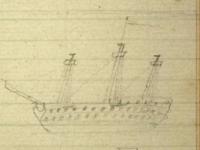The financial records that fill the 671 volumes in the Bank of North America Collection offer up a veritable goldmine of historical information, vital and pertinent to more areas of research than can be readily imagined. And yet these pages, being written out by hand, also contain a sort of history that goes beyond the academic.
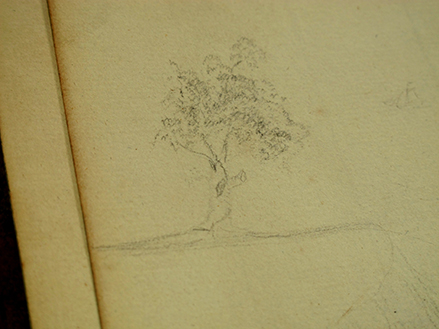
Sketch of a tree, c. 1809; found on the end papers of volume 126 (Collection 1543).
There is a simple beauty to these books that is almost other-worldly, in greatest part because it really was another world back then. In a time before computer software and excel spreadsheets, everything was recorded by hand – and so the employees of the B.N.A. quite literally left their mark on every page of this collection.
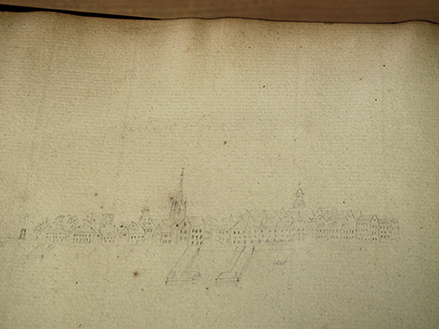
Cityscape, c. 1809; found on the end papers of volume 126 (Collection 1543).
These marks, however, were not always limited to the alpha-numerical strokes of their pens. While a contemporary bank teller or accountant might frequent their Facebook or Twitter accounts to pass the time at work, there is evidence that their 19th Century counterparts were sometimes prone to “doodling” in the empty spaces of the page.
It feels almost incorrect to call these images “doodles;” most exhibit a much higher level of intention and execution than we would associate with modern examples of the category. Even so, many of these drawings are penciled very lightly, or are all but erased; this, combined with their infrequency, perhaps speaks to a higher standard of discipline in the workplace, but it also makes finding them all the more wonderful – as if they are a sort of secret.
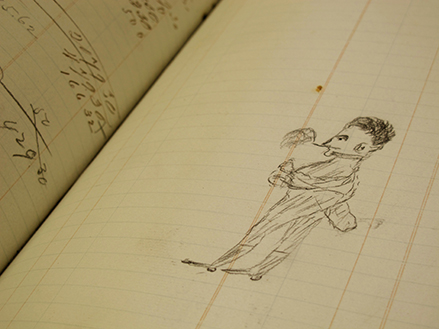
Sketch of a man smoking, c. 1845; found on page 555 of volume 228 (Collection 1543).
The books, manuscripts, and documents that are housed here at the Historical Society of Pennsylvania are not merely a recording of human history but are also a residue – a literal trace of hours spent in the lives of ordinary (and extraordinary) people. It is easy to forget that history is a period of time lived out by others just like us, and it is a fact that can be awe-inspiring to ponder. The reality of it is made all the more palpable when leafing through these objects that have traveled through time, and now exist as very tangible connections between the past and the present.
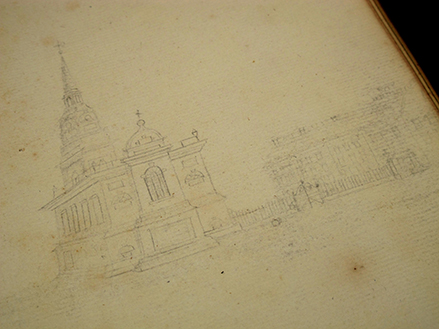
Sketch of buildings, c. 1809; found on the end papers of volume 126 (Collection 1543).
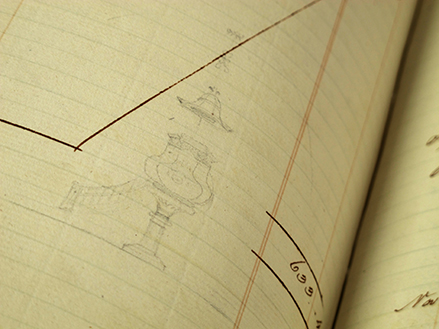
Architectural feature, c. 1809; found on page 502 of volume 126 (Collection 1543).

Woman with collar, c. 1810; found on the end papers of volume 129 (Collection 1543).

Sketch of buildings, c. 1809; found on page 281 of volume 126 (Collection 1543).
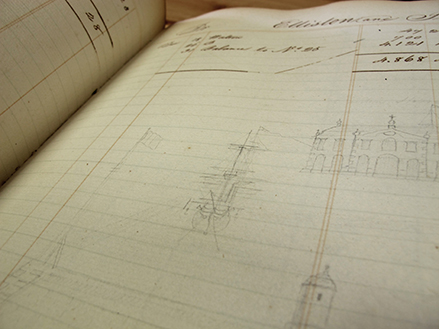
Sketch of a ship, c. 1809; found on page 281 of volume 126 (Collection 1543).
Additional sketches and doodles from the pages of the Bank of North America Collection can be seen on our Flickr page:
http://www.flickr.com/photos/historicalpa/sets/72157632939369589/

